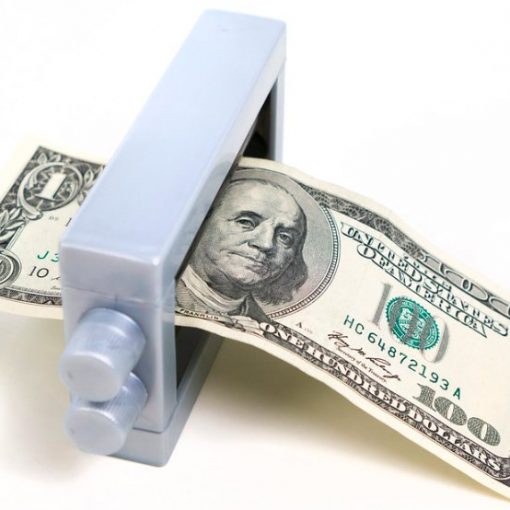We’ve come a long way since the painful sell off in March of 2009.
But, in my opinion, investors are still arrogant when it comes to market cycles and risk.
It seems that most have forgotten what it feels like to lose 50% of your investment portfolio.

No More Fear
For example, the stock market declines in October, 2014, didn’t scare investors.
An event like this usually would change an investors mood about the market.
It might lead to a stagnate period as investors adopt a wait and see stance, or even further selloff, as investors get nervous and sell to avoid the next 5 or 10% fall.
Staying Cautious
October’s nearly 10% mid-month drawdown rebounded sharply and finished the month ahead. This blip caught our attention at Rockledge, and confirms our cautious positioning.
The Covestor Rockledge L2 Portfolio is a US sector rotation strategy aimed at seeking to maximize returns based on selecting the sectors we believe to be undervalued relative to the other sectors and based on analysis of the economic climate.
We believe markets (that is, the S&P 500 index) to be cyclical, rising and falling over time.
There are periods when things are good and periods when things are bad. We believe that these cycles, both in the markets and economy, have a big impact on underlying businesses and industries.
Financial Crisis
It was in the beginning of March 2009 that the markets hit their lows. On March 9, the S&P 500 closed at 676.53.This was down some 55% from their highs just the year prior.
The VIX, the volatility index or fear gauge, was clocking in at a level of 45, which was down from when Lehman collapsed late in 2008 and it reached the 60’s.
(In the past few months, volatility has largely ranged between 13 and 17 readings.)
Finally, the standard deviation of returns, a measure of 30- day volatility, of the S&P 500 in March 2009 was high. Historically, a reading of 15-17 would be considered “normal” for the S&P, perhaps higher after an event.
In December 2008, it was in the 60s and 70s while the entire period averaged in the 50s. Conversely, 2014 averaged 10%, which is low; in line with the VIX, but low by a historic level.
Pricing in Risk
Why point these things out?
In our view, markets do not seem to be pricing risk appropriately. The investors who are driving this market are not reacting to the signals as they have historically.
This is of concern, and as such, we have held a somewhat conservative market composition relative to the market drivers, which has led to some underperformance.
Our Rockledge L2 strategy is holding 4 positions as of March 11th. In February, the Technology Select Sector SPDR Fund (XLK) performed well.
Positions in Energy Select Sector SPDR Fund (XLE) and Consumer Staples Select Sector SPDR Fund (XLP) were also in positive territory, though the trailed the broader market.
Essentially, these three previously mentioned holdings netted at to zero after fees.
Energy & Utilities
It was the holding in Utilities Select Sector SPDR Fund (XLU) that hurt the overall portfolio performance in February.
Utilities stocks were hurt by the overall stabilization of the energy sector and a mid-winter rise in oil prices.
Oil, energy and utilities have been very volatile over the past few months.
Rockledge is maintaining its defensive holdings in ETFs focused on consumer staples, utilities and technology. The L2 Portfolio also has a position in the Energy Select Sector SPDR Fund (XLE) fund.
Valuations
Going forward, we remain less optimistic about the markets from a valuation standpoint.
Furthermore, when looking at the current run by equities, and the cyclicality of the markets as noted above, Rockledge is very cautious, which is reflected in the conservative positioning.
We cite the past 6 years as evidence. Since March 2009, the S&P is up 210% based as of March 2 on price, more when factoring in dividends.
This has been driven by the Consumer Discretionary Select Sector SPDR (XLY), which has gained over 370% in the same period. Industrials Select Sector SPDR (XLI) have gained over 270%.
Looming correction?
The Healthcare and Technology Select Sector SPDR (XLV and XLK) are up about 230% each. It is extraordinary that this has happened without a sustained period of weakness or major correction.
Energy (XLE), which had a huge meltdown at the end of 2014, is up just over 100% from March 2009, also underperforming the broader market.
Its unclear if the latest move is just a recalibration of supply and demand expectations, or if there will be more ominous repercussions going forward.
While we can’t point at a specific catalyst for a downward move, we continue to have a cautious view going forward.
We can’t help but notice that the current cycle has been running for a long time.
Photo Credit: Vic via Flickr Creative Commons


